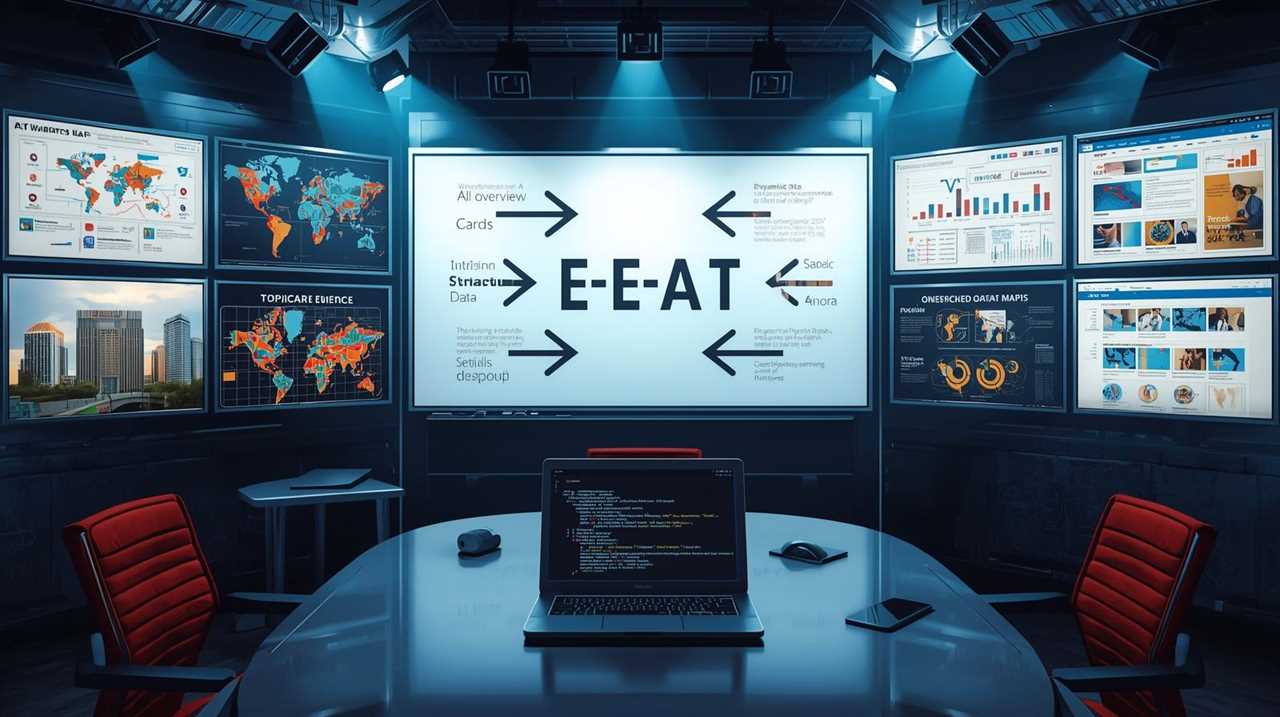
The search landscape has shifted under everyone’s feet. Yesterday’s goal was obvious: fight for a spot on page one and hope for a click. Today, the real prize is trust—becoming the site that search engines consider most credible when assembling AI-driven answers. In a world where problems are solved directly in the results, winning means being chosen as a source for those results, not merely being listed among the “blue links.”
This guide reframes SEO for the AI era, explains how to operationalize E-E-A-T as a practical framework, and outlines specific steps to rank in both Google’s AI Overviews and conversational AI (like chatbots). It concludes with a 2025-ready checklist and growth hacks for durable visibility.
The Old Goal vs. the New Goal
Then: A user typed a keyword, scanned ten blue links, clicked a page, and solved the problem there.
Now: The problem is often solved within the results—without a click. Google’s AI Overviews synthesize answers, and only the most trusted sources feed those summaries. So the target is no longer “top 10 blue links”; it’s “top 10 sources inside AI results.”
This shift explains why many sites have seen sharp traffic declines after recent algorithm and interface changes: the answer layer sits above traditional listings. The response is not to panic—it’s to evolve.
Unlearn and Reframe: A Simpler Definition of SEO
Forget the lore. Keep the essence:
SEO is the set of actions that make a site appear among the top results where users get answers—whether that’s classic listings or AI-generated overviews.
That’s it. With that clarity, the how becomes more straightforward.
Your New SEO Bible: E-E-A-T
Google’s trust model can be translated into an operational playbook:
- E — Experience: First-hand, real-world proof.
- E — Expertise: Demonstrable depth and credentials.
- A — Authoritativeness: Recognition by others.
- T — Trustworthiness: Reliable, verifiable, technically sound.
Experience: Originality Over Output
Search engines prefer sources that add what didn’t exist before. That means:
- Publishing primary artifacts: original images, datasets, screenshots, lab notes, experimental outcomes, financial models, or how-to sequences documented step by step.
- Sharing case studies and postmortems that reveal real decisions, constraints, and results.
- Avoiding commodity text that generative tools can already produce. In 2025, “more words” is not a moat—original signals are.
Expertise: Make Depth Obvious
The web is full of synthesis; depth stands out. To signal expertise:
- Build robust author pages: credentials, years in the field, notable projects, talks, media features, and links to peer-recognized work.
- Cite external research and standards; show the chain of knowledge.
- Use domain language correctly—frameworks, equations, methods, or regulations—so experts nod in recognition.
Authoritativeness: Beyond Backlinks
Backlinks matter, but authority has broadened:
- Earn mentions on high-signal surfaces: respected publications, industry associations, professional directories, conference agendas, and curated lists.
- Grow brand recall across social platforms and podcasts. Even unlinked brand mentions contribute to perceived prominence.
- Protect the experience: reviews and user feedback now modulate authority. If the “dal makhani” disappoints, the crowd will say so—and search will hear it.
Trustworthiness: On-Page and Technical SEO Still Matter
Trust is where craft meets code:
- Write for skimmers and solvers: clear headings, scannable structure, prominent takeaways, and zero fluff. Don’t pad for word count.
- Maintain a visible About and Contact page, with real identities and reachable support.
- Lock down technical SEO: HTTPS, optimized speed (Core Web Vitals), crawlable architecture, clean internal links, and zero index bloat.
- Add the right schemas (more below) so bots instantly understand your content types.
Winning in Google’s AI Overviews
AI Overviews respect classic SEO plus structured clarity:
- Publish Topical Content Fast
Track emerging updates, standards, and trends within your niche. React quickly with original analysis and hands-on tests. Recency + expertise = inclusion. - Optimize for Humans and Machines
Assume AI will read your page like a power user. Use:
- Clear question headings (“How to do X in 2025”),
- Succinct answers upfront,
- Rich detail below for depth.
- Schema Is Non-Negotiable
Add structured data to clarify intent and content type:
FAQPage,HowTo,Product,Organization,Person,Event,Review,Dataset,VideoObject, andArticlewhere applicable.
On WordPress, a reputable schema plugin can cover most cases; custom sites should reference schema.org and implement JSON-LD by template.
- Surface Answers in Multiple Places
Don’t silo answers in long essays only. FAQs, checklists, and comparison tables create reusable answer snippets that AI can easily extract.
Ranking in Conversational AI (Chatbots)
Chatbots build answers from a broader web graph and social signals. Strategies differ slightly from Google’s AI layer:
- Earn PR Mentions & List Inclusions
Appear in credible “Top 10” lists, expert roundups, and industry directories. Consistency across multiple third-party sources teaches chatbots that “everyone says this brand is relevant.” - Amplify Social Authority
Visibility and engagement on major networks help models infer authority. Regular video publishing, thoughtful threads, and cross-platform consistency create a larger “footprint” of credibility. - Leverage Thought Leadership
Long-form explainers, frameworks, and contrarian takes (backed by data) make your brand the one models quote when summarizing. Be the source others cite. - Keep Clean Citations
When publishing, include outbound references and inbound evidence (test results, images, files). Models favor materials that show provenance.
A Three-Step Strategy That Works in 2025
- Technical First
- Pass Core Web Vitals, enforce HTTPS, compress media, lazy-load assets.
- Build a logical URL and heading hierarchy; fix duplicate titles and thin pages.
- Submit sitemaps and keep robots.txt tight.
- On-Page That Solves
- Replace thin content with comprehensive, experience-led guides.
- Organize into topic clusters with strong internal linking.
- Embed original elements: images, datasets, calculators, or checklists.
- Off-Page That Earns
- Pursue editorial links and relevant citations, not spam.
- Convert brand mentions to links where appropriate.
- Appear on podcasts and panels; publish guestographics (reusable infographics with attribution).
The Ultimate SEO Checklist for 2025
Foundation
- Add site to Search Console and submit XML sitemaps.
- Verify robots.txt and canonical tags.
- Ship Organization, Person, and Profile schema where relevant.
Performance & UX
- Meet Core Web Vitals; optimize images and scripts.
- Mobile-first, accessible design; clear navigation and breadcrumbs.
Content Architecture
- Map topic clusters and fill gaps.
- Add FAQs, How-Tos, and comparisons in JSON-LD.
- Include original visuals and downloadables (templates, datasets).
Evidence & Trust
- Prominent About and Contact pages.
- Display reviews, testimonials, and case studies.
- Cite sources, link to standards, and keep last-updated timestamps current.
Distribution
- Pitch curated lists and industry media.
- Repurpose posts into shorts, carousels, and threads.
- Encourage reviews and community feedback.
Advanced Growth Hacks (That Still Work)
- Competitor Topic Hijacking
Identify competitors’ high-value pages with thin coverage and publish deeper, evidence-rich alternatives. Outdo them on originality, structure, and schema. - Guestographics & Data Drops
Release shareable infographics or micro-datasets with easy embed codes and attribution language. This attracts natural citations. - Interactive Content
Quizzes, calculators, and diagnostic checkers increase dwell and earn links. Interactivity signals experience and utility—two things AI systems love to surface. - Q&A Blocks Everywhere
Each page should answer the top questions a journalist or buyer would ask. These blocks are AI-ready snippets.
Myths to Retire
- “AI content is penalized.”
Low-quality content is penalized. High-quality, verifiable, original content—AI-assisted or not—wins. - “Domain Authority guarantees ranking.”
DA is a third-party metric. Helpful content and trust signals decide modern visibility. - “More backlinks = better ranking.”
Relevance and editorial quality beat volume. Earn mentions that matter. - “SEO is a one-time project.”
Algorithms, formats, and user expectations evolve. Updates and refreshes are part of the job.
Generative Engine Optimization (GEO): Two Lanes, One Brand
There are really two ecosystems to optimize for:
- Google’s AI Overviews — classical SEO + schema + topical freshness + original evidence.
- Chatbots — broader authority signals, PR footprints, list inclusions, and socially visible thought leadership.
Treat them as distinct lanes that reinforce the same brand truth: you’re the most trusted source.
A 90-Day Experiment Any Team Can Run
- Weeks 1–2: Technical & Schema
Fix Core Web Vitals, audit crawl/indexation, ship Organization/Person/FAQ/HowTo schema on priority pages. - Weeks 3–6: Topic Cluster Build
Publish 6–10 anchor guides with original assets (images, data, calculators), each with 3–5 supporting pages and interlinks. - Weeks 7–10: Authority Sprint
Pitch 5 podcasts, 3 curated list inclusions, 2 industry newsletters; release one guestographic pack. - Weeks 11–13: Update & Amplify
Refresh recency, expand FAQs, repurpose guides into short video and social threads; convert fresh brand mentions into links.
Measure inclusion in AI Overviews, chatbot citations, and assisted conversions—not just raw sessions. The metric that matters is answer share.
Bottom Line
SEO in 2025 is not a race to the first page—it’s a race to first trust. Those who demonstrate experience, surface expertise, earn authority, and engineer trust into every page will be the sources AI selects, quotes, and amplifies. Build for humans, speak in structured signals for machines, and distribute credibility where models go looking for it.
If you found this article helpful, please share it so others can benefit too. Be sure to keep an eye out for more upcoming posts packed with powerful SEO tips and strategies. In the meantime, feel free to explore our other articles to deepen your knowledge and stay ahead of the curve: How to Rank Local Businesses in 2 Weeks Without Hacking Google






